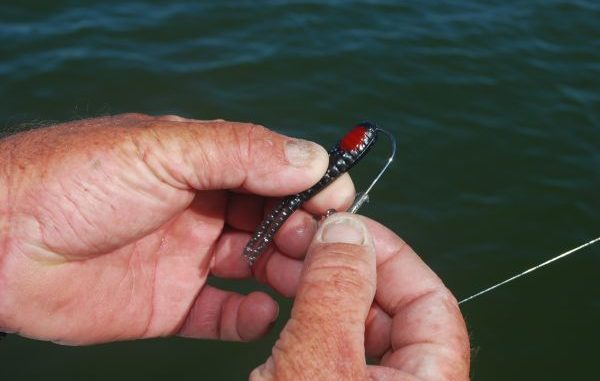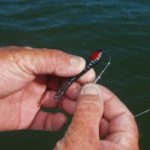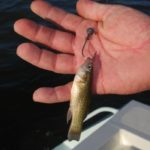
“What they bitin’ on?”
Odds are that will be the first question one angler will ask another who is having a good day. It is easy to assume that professional guides, people whose livings hinge on catching fish, would have the biggest assortment of lures. Counterintuitively, most charter fishing guides use fewer lures in fewer color assortments than the average angler.
John Aucoin, a guide with a reputation as a meat hunter, is a case in point.
“I use H&H split tail [soft] plastic beetles 95 percent of the time, almost always smoke with silver glitter,” he said. “I buy 10,000 of those a year.”
The only other colors he uses are avocado/red glitter (“Sometimes right after a front it seems to make a difference,” he says), white, chartreuse/glitter/firetail and glow/glitter.
The biggest change that Aucoin makes in his lure selection is in the size of beetle tail used. From sometime in late November or early December to late March he uses a 2-inch beetle on a 1/8-ounce jig head. He downsizes his line during the winter too, from the normal 15- to 17-pound-test to 10- or 12-pound-test. From Late March until late fall, his standard rig is a 3-inch beetle on a 1/4-ounce jig head.
He does have a personal twist, however. He impales the beetle on the hook sideways, so that the red dot faces to one side or the other, rather than up or down. Doing so, he believes, gives the lure a more erratic, fish-attracting action.
Aucoin does use live bait, but keeps his options simple here as well. He uses cocaho minnows. In spite of the fact he catches most of his fish with plastics, he will have live cocahoes in the boat’s livewell every trip.
Cocaho minnows are invariably hooked through the jaws from the bottom up with the same jig head he uses for plastics or on a 3/0 kahle hook under a variety of corks.


